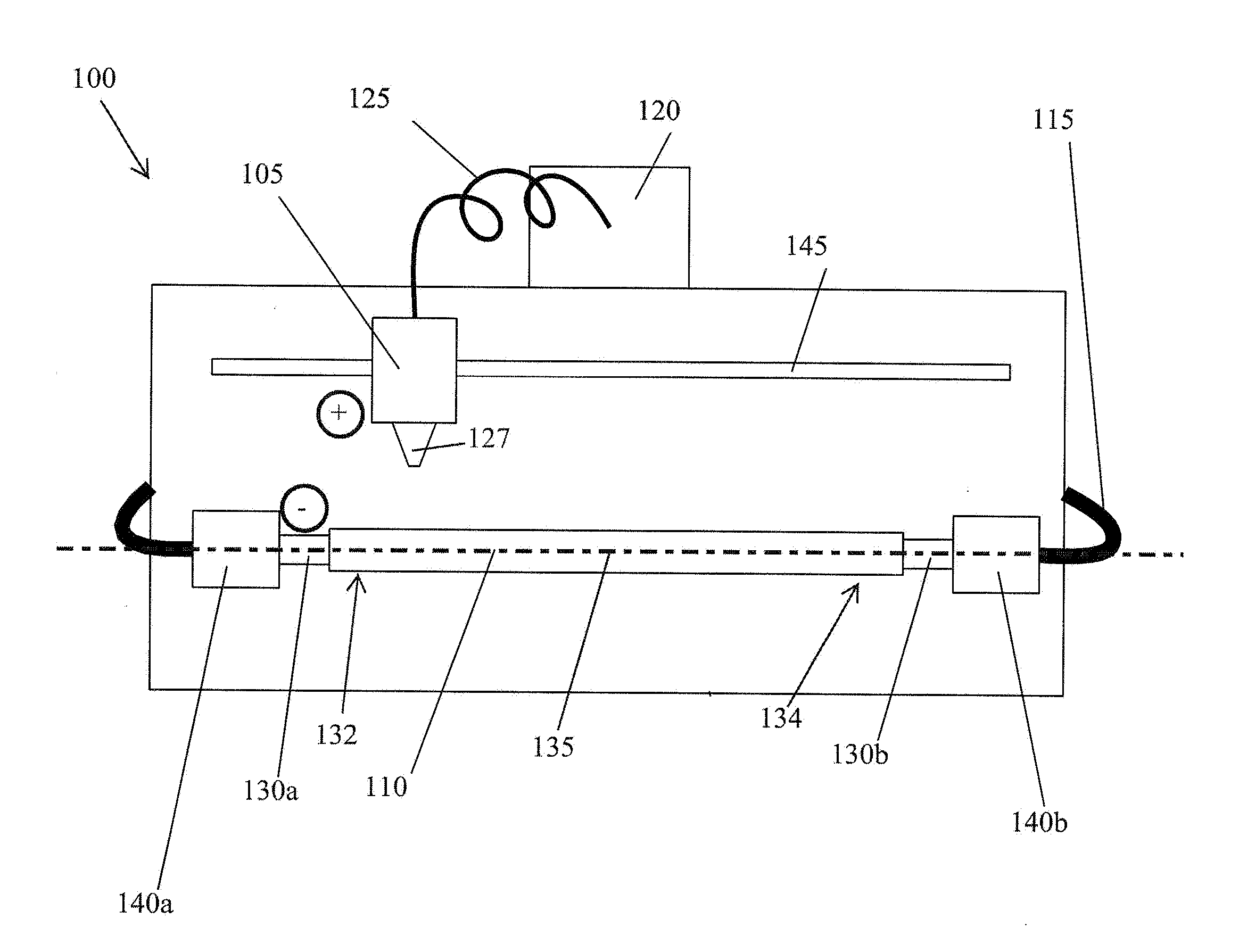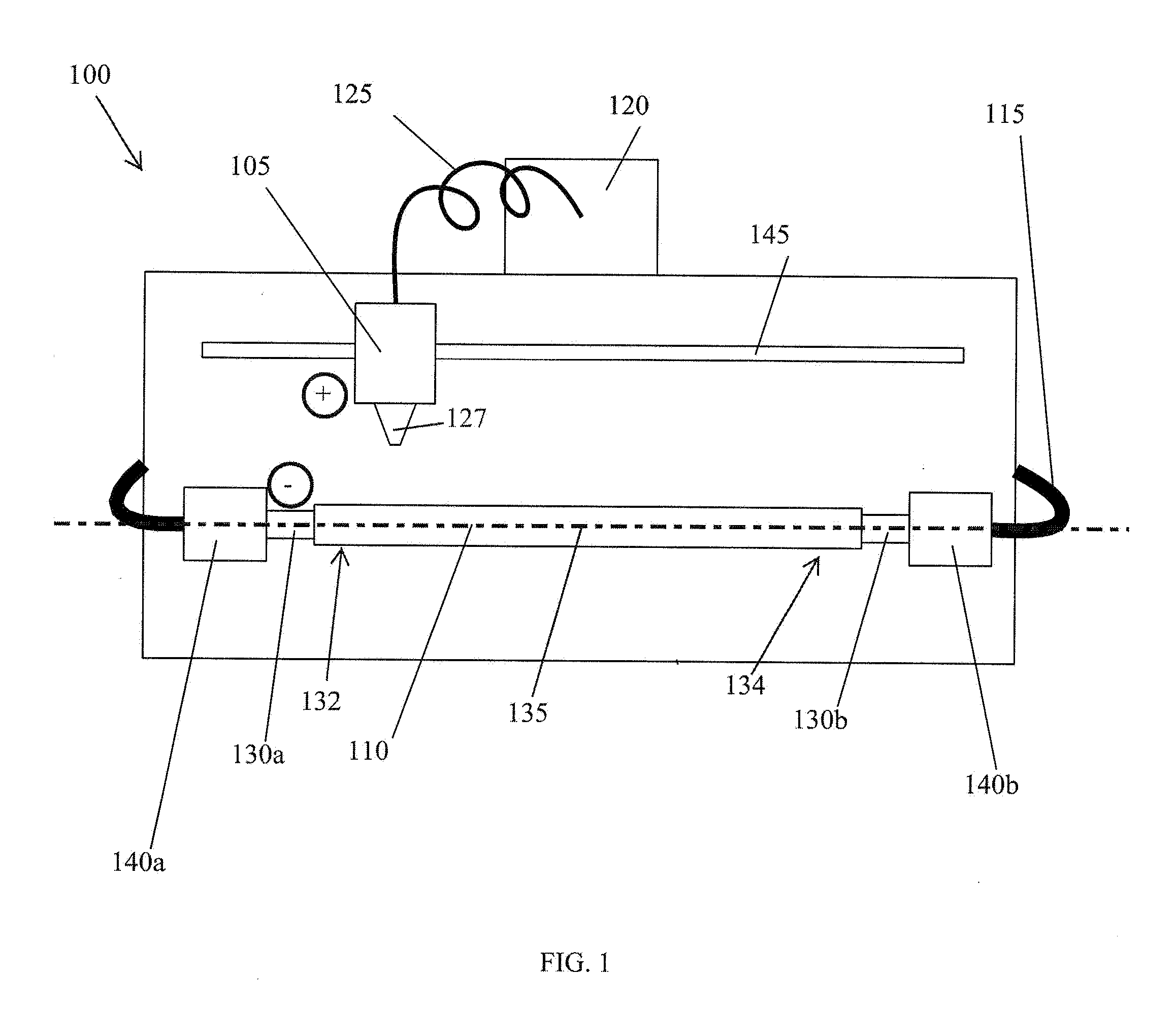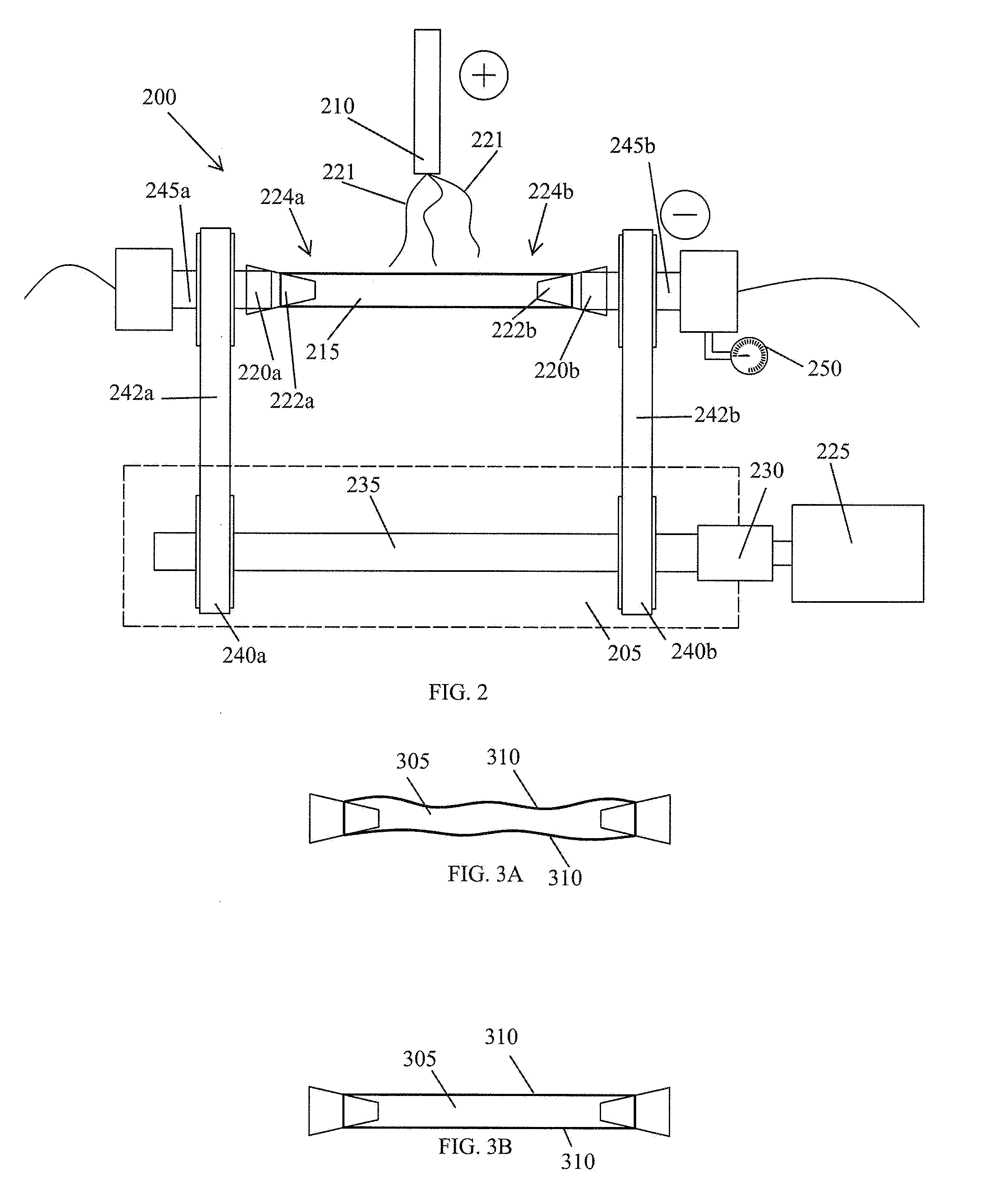System and Method for Mandrel-Less Electrospinning
a technology of mandrels and electrospinning, applied in the field of systems and methods for mandrel-less electrospinning, can solve the problems of limited long-term outcome of these procedures, myocardial infarction and ischemia, morbidity and mortality worldwide, etc., and achieve the effect of preventing kinking or distortion of geometry and/or shap
- Summary
- Abstract
- Description
- Claims
- Application Information
AI Technical Summary
Benefits of technology
Problems solved by technology
Method used
Image
Examples
Embodiment Construction
[0043]In general, electrospinning is a process that uses an electrical charge to draw a fiber, typically from a stream of solution comprised of a polymer dissolved in a solvent, dispensed through a source, for example a nozzle. The fibers that are produced from the electrospinning process are typically on the micro or nano scale. When a voltage is applied to a liquid meniscus facing the outlet of the nozzle and being replenished by an upstream flow, the liquid becomes charged. This charge causes electrostatic repulsion which counteracts the surface tension of the liquid. The liquid stream is attenuated and extruded and at a critical point. The stream dissociates into many other streams and is driven by the same electrostatic repulsion from a source such as a nozzle toward a target, for example, a substrate. Typically, streams dry significantly before the resulting fibers are deposited on a substrate. The electrospinning process can be used to electrospin a fiber matrix onto a tubula...
PUM
| Property | Measurement | Unit |
|---|---|---|
| voltage | aaaaa | aaaaa |
| voltage | aaaaa | aaaaa |
| pressure | aaaaa | aaaaa |
Abstract
Description
Claims
Application Information
 Login to View More
Login to View More - R&D
- Intellectual Property
- Life Sciences
- Materials
- Tech Scout
- Unparalleled Data Quality
- Higher Quality Content
- 60% Fewer Hallucinations
Browse by: Latest US Patents, China's latest patents, Technical Efficacy Thesaurus, Application Domain, Technology Topic, Popular Technical Reports.
© 2025 PatSnap. All rights reserved.Legal|Privacy policy|Modern Slavery Act Transparency Statement|Sitemap|About US| Contact US: help@patsnap.com



